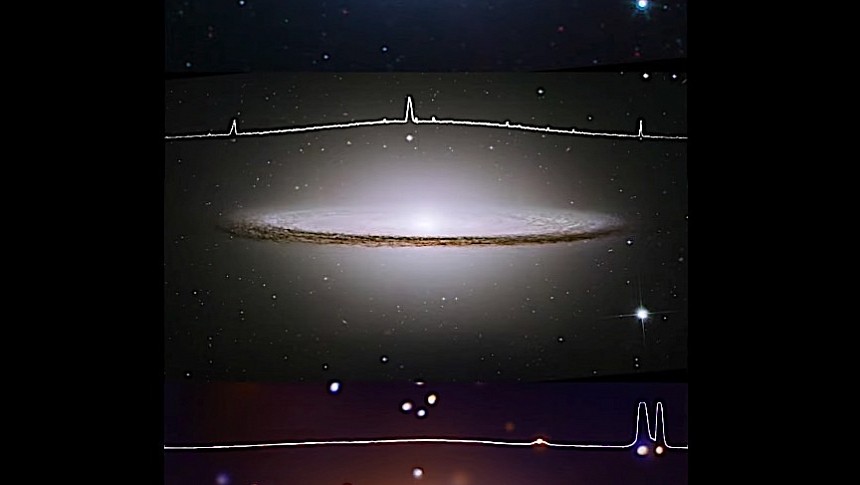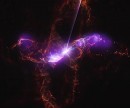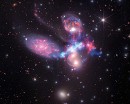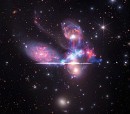We're used to getting word of what's going on in the Universe in the form of images. After all, that's what most telescopes currently in operation do, they look at things and snap pictures. Over the past few years though, NASA taught us even images of the cosmos can be translated into sound.
The space agency calls this process sonification, and it involves translating digital data from the telescopes into musical notes "so they can be heard rather than seen." The latest high-profile example of such an exercise arrived in late 2021, when the sounds of a supernova 10,000 light-years from Earth were made public. Exciting as that was, though, it doesn't even come close to what NASA revealed this week.
No less than three of these Universe greatest hits were released, each of them giving us audio glimpses of places so far away we can't even comprehend. All of them have been made possible using data from the Chandra X-ray Observatory, James Webb Space Telescope, Hubble Space Telescope, and Spitzer Space Telescope, and they all sound surprisingly good.
The first hit comes from a place called R Aquarii. That would be a variable star located over 635 light years from home, a strange, symbiotic galactic object comprising a white dwarf and a red giant. What our ears hear in this case is mostly a sort of background noise, kind of like when hearing faraway traffic through an open window. Incredible harmonics can at one point be heard. NASA describes the entire experience as hearing singing bowls struck with a mallet.
What we're actually hearing are jets released by the white dwarf and the shock waves they create while hitting the material surrounding the star.
Number 2 in the agency's greatest space hits is sound coming from Stephan's Quintet. That's a group of four galaxies rotating around one another 290 million light years from our planet. In this case, our brain perceives the sonification as a more rhythmic tune, something that sounds somewhat Oriental.
In fact, NASA converted into sound things like light itself, diffraction spikes, and shock waves of superheated gas.
Last but not least comes a song from 28 million light-years away, from one of the largest galaxies of the Virgo cluster, the M104. This one is without a doubt the most alien-sounding of the bunch, and it makes you feel like you're listening to the soundtrack of a 1950s B movie. For NASA, it sounds more like a synthesizer. The eerie notes in fact depict how things like a circling ring of dust, hot gas, and light itself sound like.
You can listen to all three galactic hits below. They are very short tunes, true, but they might forever change the way you think of the Universe.
No less than three of these Universe greatest hits were released, each of them giving us audio glimpses of places so far away we can't even comprehend. All of them have been made possible using data from the Chandra X-ray Observatory, James Webb Space Telescope, Hubble Space Telescope, and Spitzer Space Telescope, and they all sound surprisingly good.
The first hit comes from a place called R Aquarii. That would be a variable star located over 635 light years from home, a strange, symbiotic galactic object comprising a white dwarf and a red giant. What our ears hear in this case is mostly a sort of background noise, kind of like when hearing faraway traffic through an open window. Incredible harmonics can at one point be heard. NASA describes the entire experience as hearing singing bowls struck with a mallet.
What we're actually hearing are jets released by the white dwarf and the shock waves they create while hitting the material surrounding the star.
Number 2 in the agency's greatest space hits is sound coming from Stephan's Quintet. That's a group of four galaxies rotating around one another 290 million light years from our planet. In this case, our brain perceives the sonification as a more rhythmic tune, something that sounds somewhat Oriental.
In fact, NASA converted into sound things like light itself, diffraction spikes, and shock waves of superheated gas.
Last but not least comes a song from 28 million light-years away, from one of the largest galaxies of the Virgo cluster, the M104. This one is without a doubt the most alien-sounding of the bunch, and it makes you feel like you're listening to the soundtrack of a 1950s B movie. For NASA, it sounds more like a synthesizer. The eerie notes in fact depict how things like a circling ring of dust, hot gas, and light itself sound like.
You can listen to all three galactic hits below. They are very short tunes, true, but they might forever change the way you think of the Universe.









